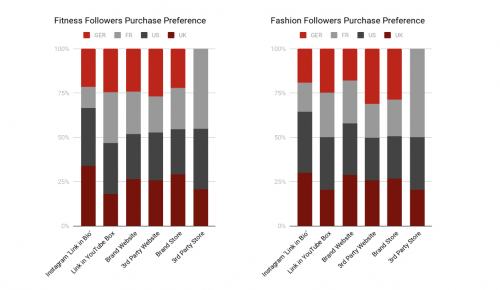Sneaker Brands and Influencers: Finding the Right Approach
Increasingly, influencers are relied upon for information and inspiration. How can sneaker brands create trusted relationships with influencers without losing sight of business objectives? Here, we share our advice for this fast-moving sector.
Influencers want to be trusted. They know their audience, and they know how sponsored content fits with their personal brand. But there’s a certain amount of uncertainty in allowing influencers free reign.
This is where a strong understanding of how the influencer/follower relationship gets built, and which brand audiences have the highest influence potential, can help a brand get ahead of the uncertainty. That is why we create customizable global surveys for our clients: to help our brands foster strong—but still optimized—influencer partnerships.
We have found that this already complicated endeavor is even more complex for sneaker brands, given they are uniquely positioned between the worlds of fashion and fitness. Our survey of the US, UK, Germany, and France indicates that understanding these spheres of influence separately is the key to optimization.
Influencers are arbiters of aspiration, but the “why” behind fitness versus fashion is an important differentiator. According to our survey, fashion influencers’ value offer is in their creative inspiration, and sponsored products are potential tools to unlock creativity. Alternatively, fitness influencers are followed because they make trusted recommendations to help followers’ reach targeted goals.
This is apparent from the type of content followers want to see from each type of influencer. In the US, fashion followers are more likely to remember a product post that demonstrates how it gets styled (57%) or contains an unboxing (55%), and they are most likely to purchase because they like the influencer or his/her style matches their aesthetic.
On the other hand, fitness followers are more interested in a giveaway (87%) or an event many influencers attend (76%). They purchase a sponsored product because they already love the brand or just had a gut feeling of “love” for the product itself.
This is likely why fashion followers are less likely than fitness followers to make a purchase based on an influencer’s recommendation. Of the four countries surveyed, US fitness followers are most likely to purchase and US fashion followers are least likely to purchase. Sponsored product discovery and purchase (via link in bio/profile) is equally as likely on Instagram and YouTube in the US and Germany. However, Instagram is more popular for UK fitness followers and YouTube is more popular with French fitness followers. However, non-social options like in-store, online, or through a third party seller are the most popular for all countries.
So what does all this mean for sneaker brands?
- Sponsored posts to fitness followers trigger an existing brand affinity, whereas fashion followers are more open to discovery. For this reason, it may take longer to see a return on fitness followers—who need to form a relationship with the brand before they purchase.
- While both fitness and fashion influencers can drive purchase, fashion followers don’t care as much about the brand and more about how it’s styled. If it fits their aesthetic, they’ll purchase.
- For global campaigns, various purchase options need to be provided in order to cover each country’s preferred way of purchasing. And while tracking in-store and third party purchases is a challenge, it’s essential to determining the success of an influencer partnership.
Ultimately, both fashion and fitness influencer partnerships are important to any sneaker brand—but recognizing the differences in their followers’ behavior towards sponsored content is key to building a strong and loyal relationship.
For more insights from our Global Influencer Follower Survey, please reach out to We Are Social at [email protected].
Research by Rebecca Finn

